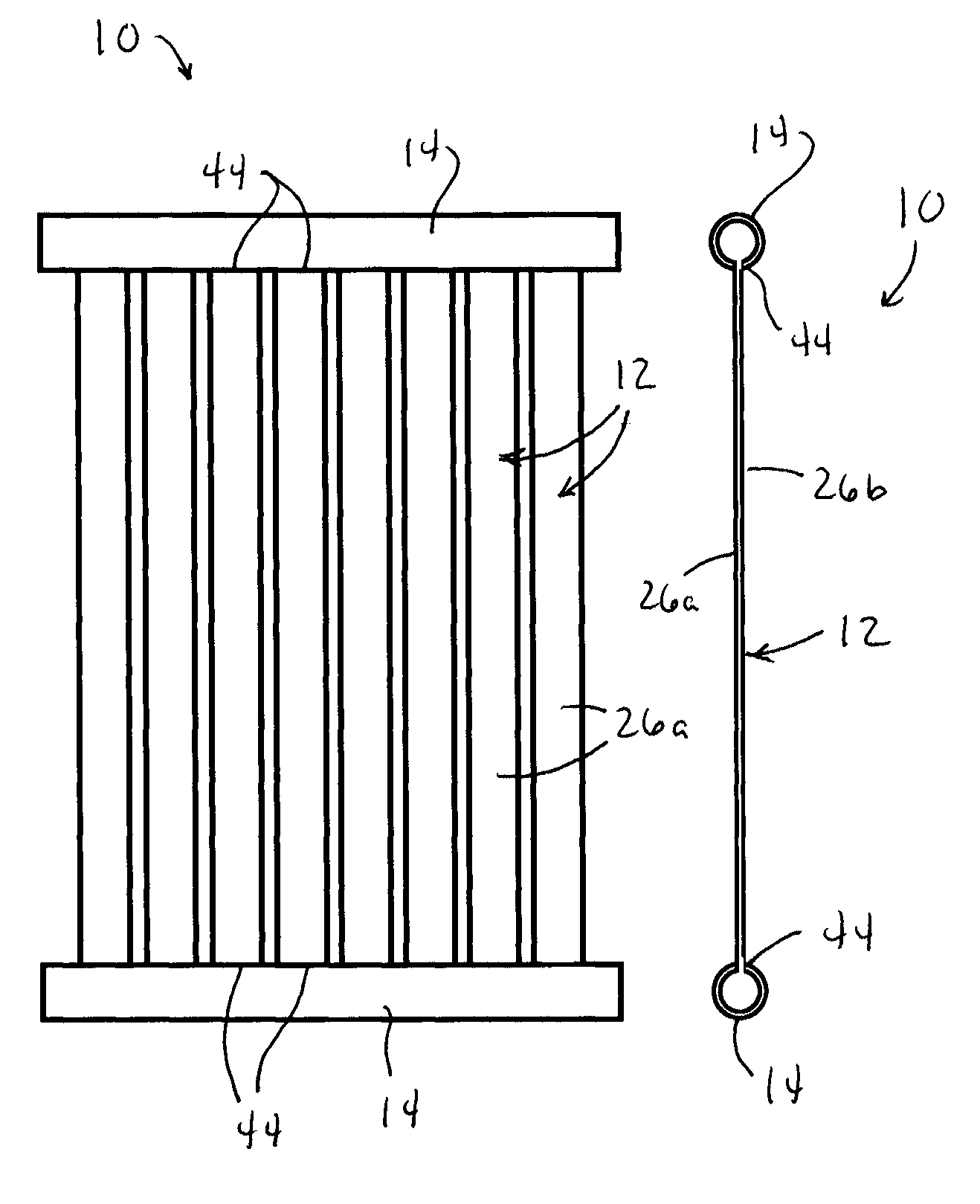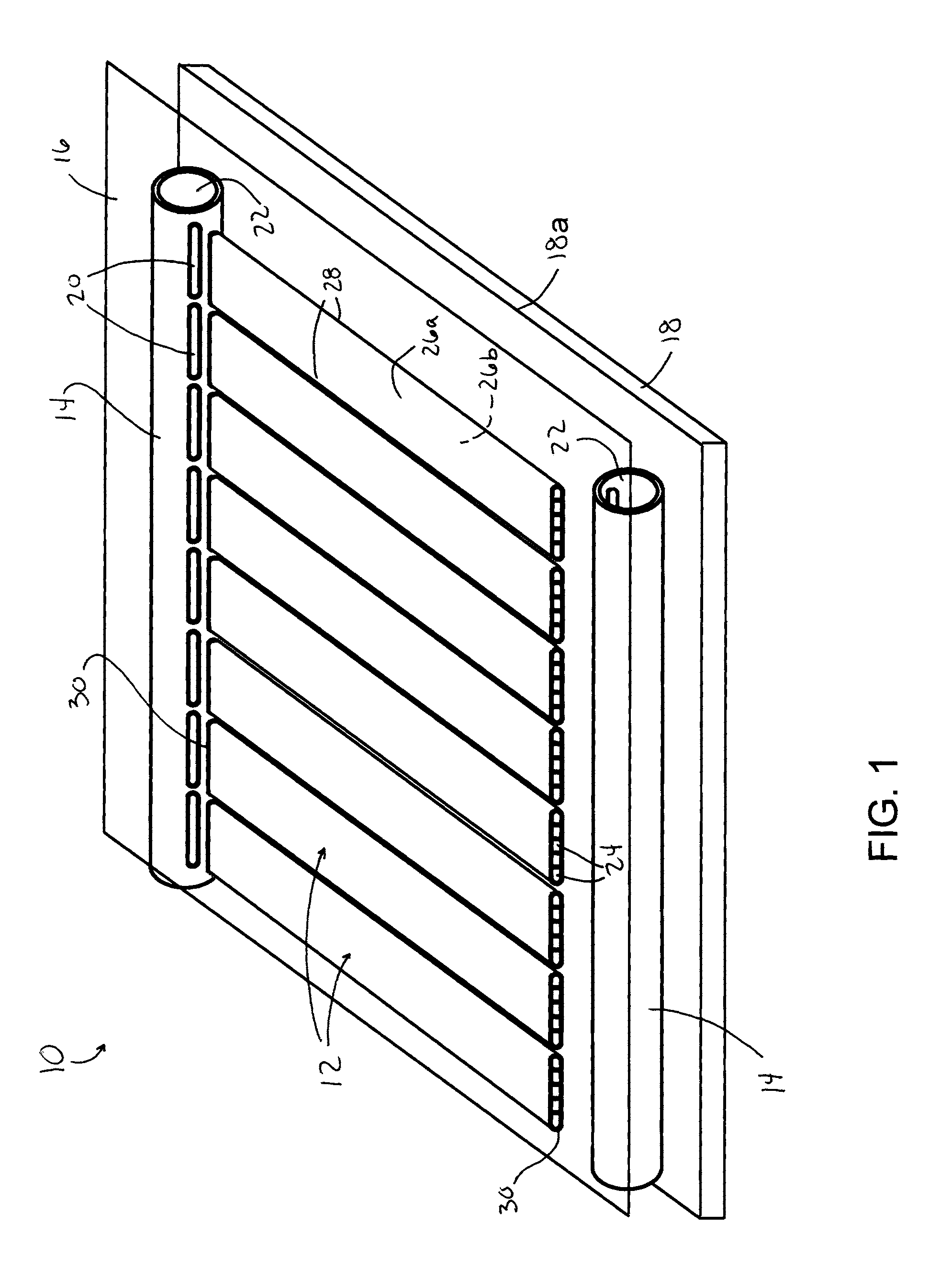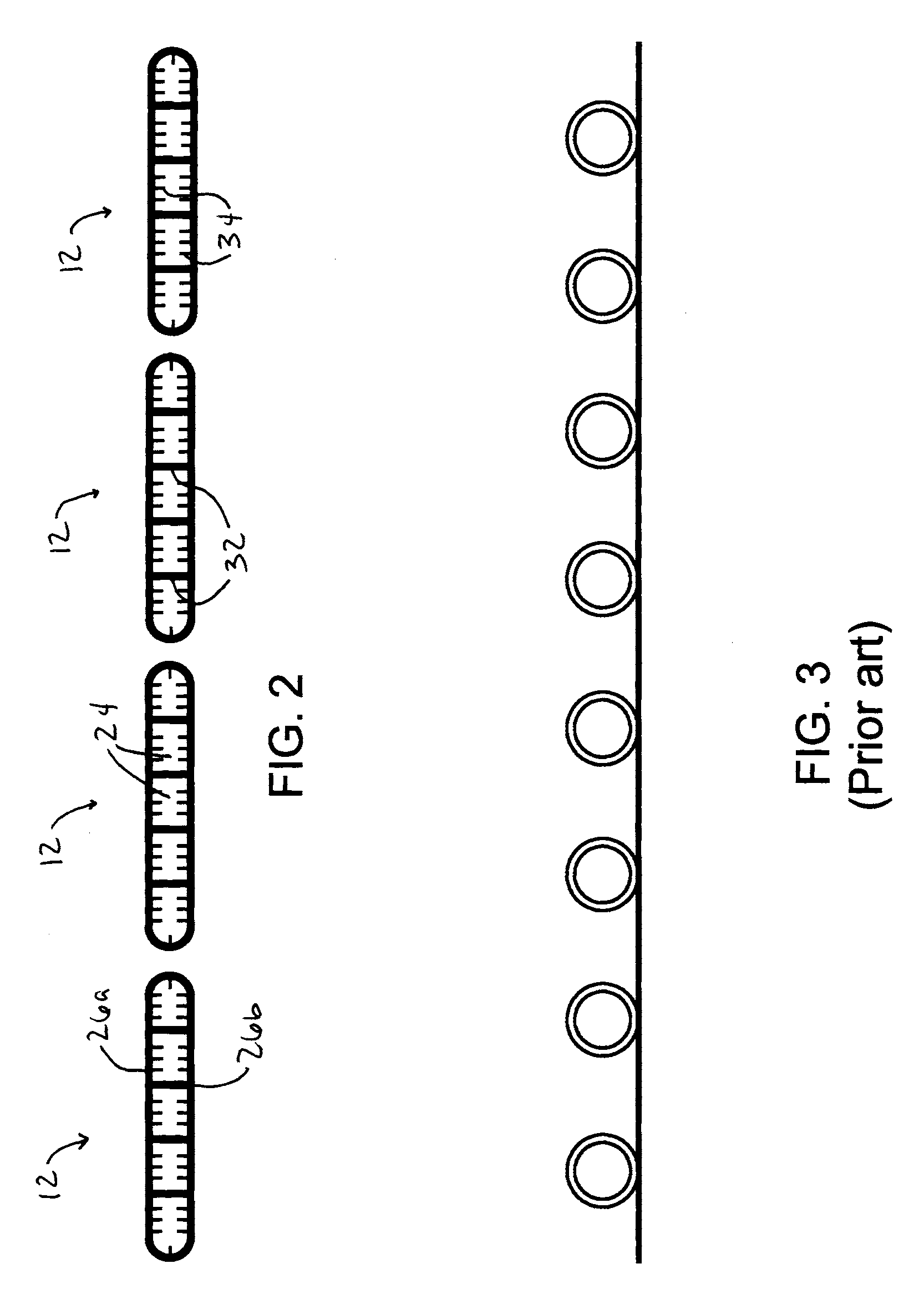Solar energy collecting system and method
a solar energy and collector technology, applied in solar heat systems, solar thermal energy generation, light and heating equipment, etc., can solve the problems of polymeric tubes, copper tubing is relatively heavy, and the thermal collector technology outlined above has a number of limitations, so as to reduce shipping costs, reduce costs, and reduce weight
- Summary
- Abstract
- Description
- Claims
- Application Information
AI Technical Summary
Benefits of technology
Problems solved by technology
Method used
Image
Examples
Embodiment Construction
[0023]FIG. 1 schematically represents a solar energy collection apparatus, referred to below as a solar panel 10, according to an embodiment of the invention. The panel 10, which may be described as a solar collector or thermal collector, comprises multiple tubes 12 fluidically connected to a pair of manifolds 14, which form a fluid circuit between a pair of panels 16 and 18. The upper panel 16 (as oriented in FIG. 1) is above the tubes 12 and is preferably glazing or another material suitably transparent to solar radiation, whereas the lower panel 18 is beneath the tubes 12 and may be formed of various materials, including materials that have thermal insulating properties and / or reflective properties. For example, the lower panel 18 may have a reflective surface 18a as discussed below. The tubes 12 are represented as being aligned with slots 20 in the manifolds 14, into which the tubes 12 are inserted to create the fluid circuit that comprises the interior chambers 22 of the manifo...
PUM
 Login to View More
Login to View More Abstract
Description
Claims
Application Information
 Login to View More
Login to View More - R&D
- Intellectual Property
- Life Sciences
- Materials
- Tech Scout
- Unparalleled Data Quality
- Higher Quality Content
- 60% Fewer Hallucinations
Browse by: Latest US Patents, China's latest patents, Technical Efficacy Thesaurus, Application Domain, Technology Topic, Popular Technical Reports.
© 2025 PatSnap. All rights reserved.Legal|Privacy policy|Modern Slavery Act Transparency Statement|Sitemap|About US| Contact US: help@patsnap.com



